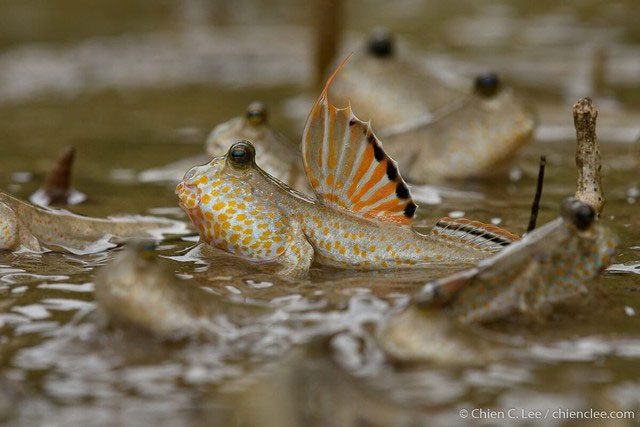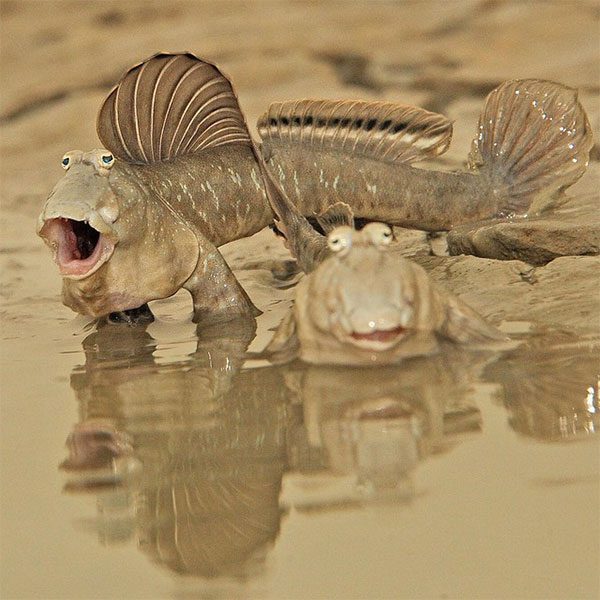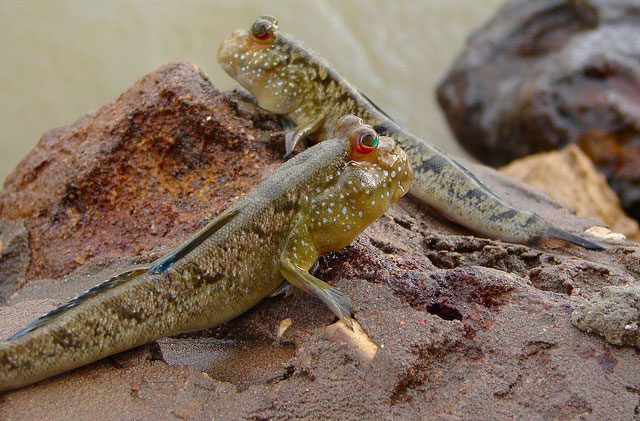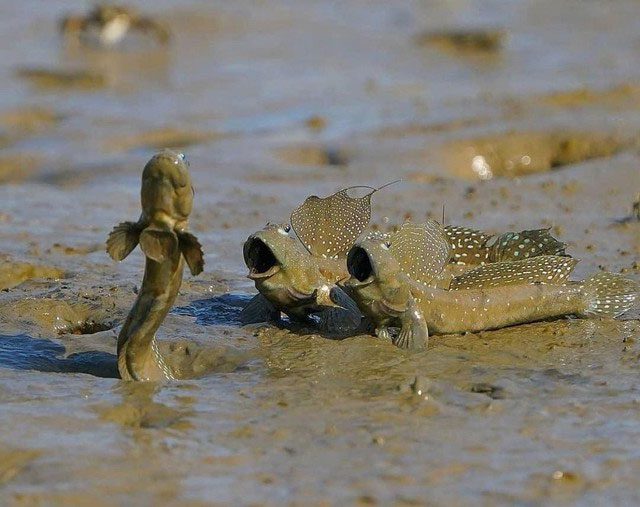The mudskipper is a fascinating creature, and recently, scientists have discovered a shocking phenomenon: mudskippers are forced to come ashore to survive! This discovery has sparked widespread interest and amazement. What is the cause of this intriguing phenomenon?
Lack of Oxygen in Water
A lack of oxygen in water can be due to eutrophication of the water body. Excessive organic matter and nutrients can lead to overgrowth of algae and aquatic plants, resulting in massive blooms. These algal blooms reduce the amount of dissolved oxygen in the water, making it difficult for fish to obtain sufficient oxygen.
The lack of oxygen in water can also be linked to rising temperatures. As water temperature increases, the solubility of oxygen decreases, leading to lower levels of dissolved oxygen. This phenomenon is especially common in summer and in shallow waters. The combination of high temperatures and shallow water increases the risk of oxygen depletion, making the environment uninhabitable for fish.
Slow-moving water can also lead to a lack of oxygen. Water flow can enhance the contact between water and air, helping to dissolve and supply oxygen. When the water flow is slow or stagnant, fish do not receive enough oxygen.

The scientific name of the mudskipper is Periophthalmus variabilis, belonging to the family Gobiidae, and is an amphibious species resembling a butterfly goby but with rough skin and prominent eyes on top of its head. (Photo: Zhihu).
So why do mudskippers choose to come ashore? The main reason is their search for oxygen. Although mudskippers live underwater, they possess unique physiological traits that allow them to leave the water for short periods. When they sense a lack of oxygen in the water, mudskippers actively move ashore to obtain more oxygen.
Being forced to come ashore can temporarily alleviate the oxygen deficiency underwater. The oxygen content in the air on land is much higher than in water, making it an effective way for mudskippers to acquire oxygen. Mudskippers often spend time on rocks, mud, or wet sand, using oxygen from the shore to replenish their bodily needs.
However, coming ashore also carries its own risks. The movement of mudskippers on land is only temporary because they cannot survive long out of water. Adverse factors such as temperature changes on land, threats from predators, and dehydration can all stress mudskippers. Therefore, once conditions on land become dangerous or unfavorable, mudskippers quickly return to the water.

This species is primarily found in estuarine and tropical coastal areas such as India, Australia, and Southeast Asian regions like Indonesia, the Philippines, Thailand, and Vietnam… A total of 32 species of mudskippers inhabit the Earth. (Photo: USGS).
Water Pollution
Water pollution has a direct impact on the habitat of mudskippers. Water pollution is mainly caused by industrial wastewater, agricultural pesticides, and household waste being discharged into water bodies.
These pollutants directly affect oxygen levels, pH values, and concentrations of waste in the water. Mudskippers require clean oxygen and suitable water quality to survive, and water pollution weakens their habitats, causing many mudskipper species to abandon their environments.
Water pollution has devastated the food chain of mudskippers. Mudskippers are bottom-dwelling organisms that typically feed on algae in the water, thus providing a food source for other fish and aquatic animals.
However, water pollution can lead to the decline or even extinction of various algal species, which in turn affects the food supply for mudskippers. Without sufficient food, mudskippers struggle to maintain their vital activities, forcing them to seek alternative survival strategies.
The World Wildlife Organization recognizes mudskippers as one of the 6 “strangest creatures on the planet.”

They can live underwater, in muddy marshes, or hop on land, and even climb trees when foraging for food. Each adult measures 10-15 cm long, about the size of a finger. (Photo: Grunge)
Water pollution can also negatively affect the breeding and rearing processes of mudskippers. Some pollutants accumulate in the water and transfer to mudskippers through the food chain, causing damage to their reproductive cells and reducing their reproductive capabilities.
Furthermore, water pollution can also harm the eggs laid by mudskippers, affecting the incubation process of the eggs and the normal development of the fry. These issues will continue to threaten the populations and survival of mudskippers.
Relatively speaking, although mudskippers on land can temporarily avoid the threat of water pollution, they do not voluntarily choose to live ashore.
Mudskippers are aquatic animals, accustomed to living underwater, and have adapted to that environment and lifestyle. Living on land brings about a series of new challenges such as competition for food and habitat with other land organisms, adapting to climate changes, and terrestrial environmental conditions, etc.

Mudskippers are commonly found along mudflats at river mouths, muddy beaches with water levels not exceeding 2 meters. (Photo: Zhihu).
Habitat Destruction
One of the main causes of habitat destruction for mudskippers is human activities impacting marine environments. As population growth and industrialization accelerate, the unprotected shallow waters of coastal areas suffer from overfishing, industrial pollution…
This has led to a decline in water quality, disruption of ecosystems, and severe degradation of habitats for many aquatic species, including mudskippers. They gradually lose their usual food sources and must search for new survival opportunities.
Global warming is also significantly affecting the habitats of mudskippers. Due to climate change, rising ocean temperatures have forced many marine organisms to abandon their original habitats.
For mudskippers, they need to adapt to higher temperatures to survive or face thermal stress and physiological damage. The mass exodus of mudskippers onto land has, in fact, become tangible evidence of global warming.
Habitat destruction also leads to the disruption of ecological balance. Coastal shallow waters represent a complex ecosystem, characterized by the interdependence and interaction between various organisms.
As an important link in the food chain, mudskippers have a complex web of relationships with other organisms. Once the habitat is destroyed, this ecological balance is disrupted, forcing mudskippers to seek new habitats to meet their survival needs.


















































